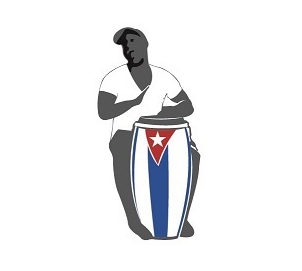Living Rhythms: The AfroCuban Culture of Matanzas
Matanzas is a city where the heartbeat of AfroCuban history pulsates through the vibrant streets and daily rhythms of life. Beyond historical landmarks and events, this city embodies a living tapestry of rich AfroCuban culture seamlessly integrated into the fabric of everyday existence.
sacred items adorn the alter at a Santería ritual
We need to step back a few centuries to understand how this evolved - back to the beginning of colonization and the early years of the Atlantic Slave trade. Spain originally exploited the local indigenous people as forced labour, but when disease and warfare would eventually cause the demise of that population, they looked to West Africa as their next supply point. The Spanish Empire continued transporting slaves to Cuba through the 16th and 17th centuries and beyond.
The plantation economy of the late 1700’s through the 1800’s, which fueled the early development of Matanzas, further intensified the need for more forced labour. During that time, the slave population of the province swelled to over 60% of the total number of people living there (it’s far less today). Their customs and religious beliefs syncretized with traditional elements of Cuba and are now part of its present culture.
With such a legacy, Matanzas has had a tumultuous past and was the site of many uprisings and insurrections, including one of the largest slave rebellions in the history of Cuba which started in 1843 at the Triunvirato Sugar Mill. The rebellion culminated in imprisonments (and a small number of executions) of all those believed to be involved, during a period referred to as ‘Year of the Lash’. El Castillo de San Severino, the prison at the time and the site of those executions, is a testament to that dark part of Matanzas’ history.
Batá drum demonstration at the Casa Templo in Pueblo Nuevo
The descendants of those same African slaves are responsible for giving birth to Cuban rumba, the iconic form of street music and dance which is said to have originated in the late 1800’s in the underprivileged neighborhoods of plantation workers. Although it was initially a criminal offence to perform or dance rumba in public, considered too raunchy and deviant, it ultimately became one of the most popular styles of music in Cuba and is one of the signature elements of the culture of Matanzas today. Cuba’s most famous rumba group, Los Muñequitos de Matanzas, has been making music since 1952 and still reside in the barrio of La Marina. They and other groups such as AfroCuba de Matanzas, a folkloric ensemble who represent a broader range of dance and music of AfroCuban origin, perform frequently in and around Matanzas.
The religions of Santería and Yoruba are another element of West African culture which became woven into the fabric of the city. They became syncretized with the Roman Catholic religion, as a way of enabling slaves to practice their religion without being persecuted. Most AfroCubans are practitioners of these and other related religions, but much of the rest of the population is as well. It’s impossible to be certain, but it’s estimated that between 60 and 70% of Cubans are practitioners of Santería and similar religions. In Matanzas, while it’s practiced predominantly in the neighborhoods of La Marina, Simpson and Pueblo Nuevo, it’s worth noting that visitors can experience it anywhere in the city.
Santería ceremony in Barrio Raspadora
There are numerous Cabildos, which are ethnic associations or councils representing the interests of AfroCuban culture and religion, as well as Casa Templos where rituals and ceremonies are performed and celebrated. However, ceremonies are not limited to these locations - I’ve attended events in private homes and in public spaces as well. The city holds many cultural events throughout the year representing and honoring that part of their heritage. There are also cultural entities such as Callejón de las Tradiciones - a community space and art project in the neighbourhood of Pueblo Nuevo which is focused on efforts honoring AfroCuban traditions while promoting inclusivity and diversity in the community.
It’s not uncommon for visitors to the city to stumble upon a Santería ritual in progress or a drum toque in session, and to be invited in to observe or participate. Symbols of AfroCuba are represented in the music, art, dance, fashion and so many other areas of everyday life.
The spirit of AfroCuban culture is not just a chapter in history; it's a living, breathing essence intricately embedded in the very soul of the city of Matanzas.








